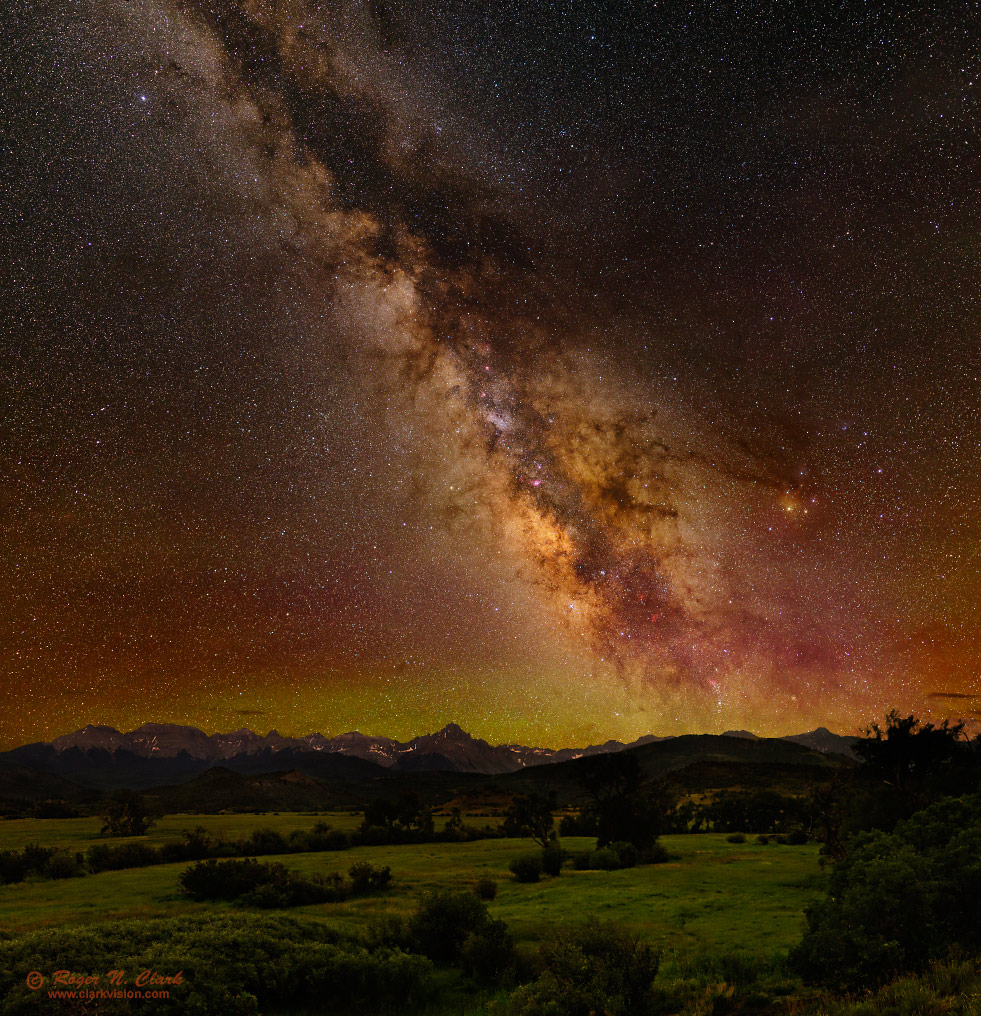| Home | Galleries | Articles | Reviews | Best Gear | New | About | Contact | Gallery Index | Previous |
Next |

| Home | Galleries | Articles | Reviews | Best Gear | New | About | Contact | Gallery Index | Previous |
Next |

Summer in the Colorado San Juan Mountains is spectacular 24 hours per day. On a clear night the stars and atmospheric airglow illuminate the landscape in a dance of red and green light. The atmospheric colors and those from the stars, nebulae and dust show an ever changing smorgasbord of color.
This scene is all natural light. The light on the land is that from the night sky: light from stars, the Milky Way galaxy, and airglow: light from molecules in Earth's upper atmosphere excited by solar ultraviolet light during the day and from cosmic rays. The molecules emit light throughout the night. The red is typically from hydroxyl (OH) 80 to 90 km high. The airglow light is emission line sources, like that from a neon sign. That narrow-band light creates enhanced colors on the landscape, in particular greens and reds in the trees. For more on natural color in the night sky see Parts 2a, 2b, 2c and 2d on Color of the Night Sky and proper post processing to show those colors.
Technical. Canon 6D 20-megapixel digital camera, Sigma 35 mm f/1.4 DG HSM lens at f/1.4. Thirty one exposures at ISO 1600 were made for the mosaic. On the sky, the camera tracked the stars using an iOptron SkyTracker, with 19 exposures, 30 seconds each, then 12 images with 120-second exposures of the land were made with no tracking, with ISO 1600. On the land, 4 views were images and three 120-second exposures were averaged in each pointing, thus the four images of the land had 6 minutes of exposure each. The full sized image is 8129 pixels high by 7848 pixels wide (64 megapixels). The field of view is 87 x 84 degrees.
No dark frame subtraction, and no flat fields were used. The Canon 6D has the very low pattern noise, and on-sensor dark current suppression, so there is no need to do dark frames. Modern raw converters correct for hot pixels and, with lens profiles, correct for light fall-off, so there is no need for flat field corrections. Processing was done with 16-bits/channel.
Link to more information on
Nightscape Photography with Digital Cameras.
Link to more information on
The Color of the Night Sky.
To learn how to obtain stunning images like this, please visit my Extensive Articles on Photography .
Keywords to this image = nightscapes airglow landscape-1 mosaic mountains san-juan-mtns colorado night low-light digital_astro large_format canon_6d
Image ID: san.juan.nightscape.rclark.c07.25.2014.IMG_7386-448.f-c1-bin8x8s.jpg
| Home | Galleries | Articles | Reviews | Best Gear | Science | New | About | Contact |
Last updated November 03, 2025